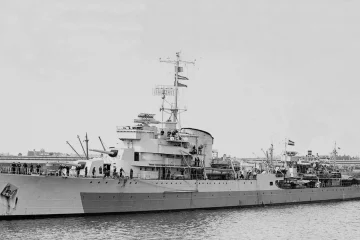The war In Netherlands East indies (NEI) led to the merging of the training schools of the air force of the KNILM (Royal Netherlands East Indies Army), the aviation service of the Royal Dutch Navy in NEI and the Vrijwilliger Vlieger Corps-VVC (Volunteer Pilot Corps), which trained private volunteers.
With the advancing Japanese invasion, acting Navy Commander Colonel Kengen, suggested that the school should be evacuated to Australia and students be trained there. On 10 January 1942, during the installation meeting of the ABDA-Command, commanded by British General Sir Archibald Wavell, the Chief of the Australian Air Force (RAAF), Air Marshal Sir Charles S. Burnett. Kengen discussed the desirability of moving the flight schools to Australia. During that discussion, it was already clear that the RAAF itself desperately needed its own training capacity and that the Dutch would have to adapt to the RAAF training schedule.
The RAAF training syllabus, which was sent to Batavia for study a week after the conference, proved to be acceptable. Preparations were immediately made for an actual relocation of both flight schools to Australia. To this end, the commander of the school Major M. van Haselen, and chief officer pilot 2nd class H.L.A. van der Kroef left for Australia by plane on 1 February 1942 to prepare the training for this.
A few days later the Liaison Officer of the Netherlands Royal Navy in Australia, Captain Lieutenant G.B. Salm, telegraphed to the Commander of the Army and Commander of the Navy that permission had been obtained from the Australian Government for further training of pilots in Australia if sufficient equipment could be provided. Van Haselen reported to the Inspector of the Navy at Bandung that the RAAF could immediately, i.e. at the beginning of March 1942, take three hundred apprentices into training, divided over various training institutes, noting that all apprentices could also follow an air gunner training. He also mentioned several measures taken for the purposes of training.
Interesting is the strength list of the school, which Van Haselen put forward to the Australians:
- 40 student pilots who had completed 6o hours Ryan monoplane, 6o hours Koolhoven and 12 ½ hours Lockheed L2;
- 60 student pilots who completed 6o hours of Ryan monoplane;
- 120 student pilots who had completed 10 to 15 hours of training on the Tiger Moth;
- 80 Student pilots, ready to start training.
The decision to evacuate the flight schools was then taken, preparations started on 18 February 1942. Students embarked at Tandjong Priok, the port of Batavia, on the 14000-ton measuring ms. ‘Boissevain’ of the Koninklijke Paketvaart Maatschappij. No planes were taken. On February 19, with the assistance of a number of Ryan float training aircraft, more students and ground staff departed Surabaya with the 9000-ton measuring ms. ‘Tjinegara’. The instructors also left for Australia on the same day with some Dornier flying boats. The Transport Department (TA) of the KNILM Airforce and the civil airliner KNILM also contributed to this large-scale evacuation.
Eventually they arrived in Adelaide, Australia and were housed at the RAAF airfields Mallala and Parafield. The more advanced students went to Mallala Air Base, where the RAAF’s 6th Service Flying Training School was initially located.
At Parafield, not far from Mallala and based at the RAAF’s Elementary Flying Training School the less experienced students were accommodated in two flights: A-flight and B-flight. These flights consisted of the militarised members of the former VVC and sport pilots who had spontaneously registered as student pilots in December 1941.
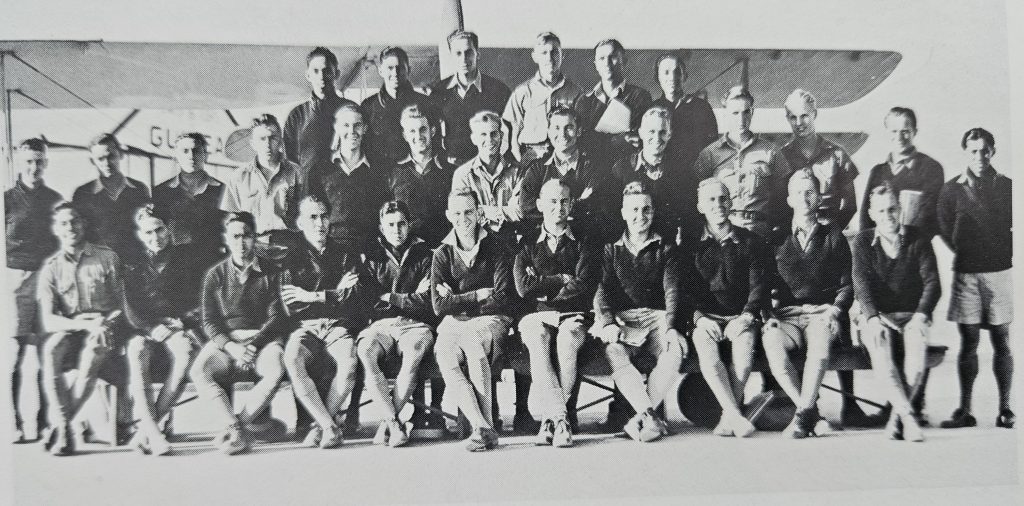
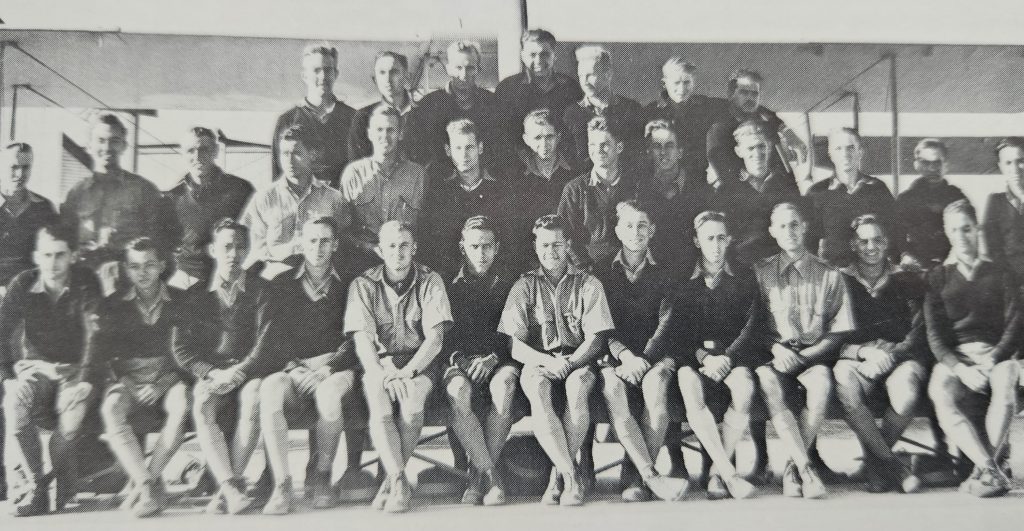
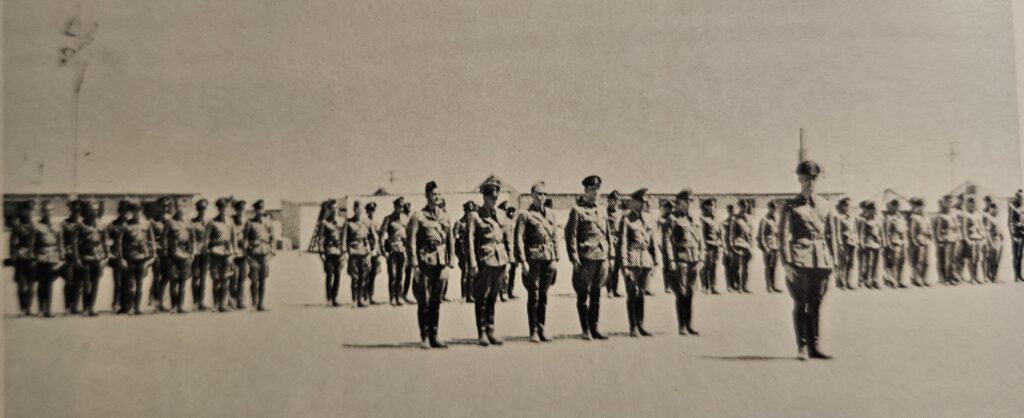
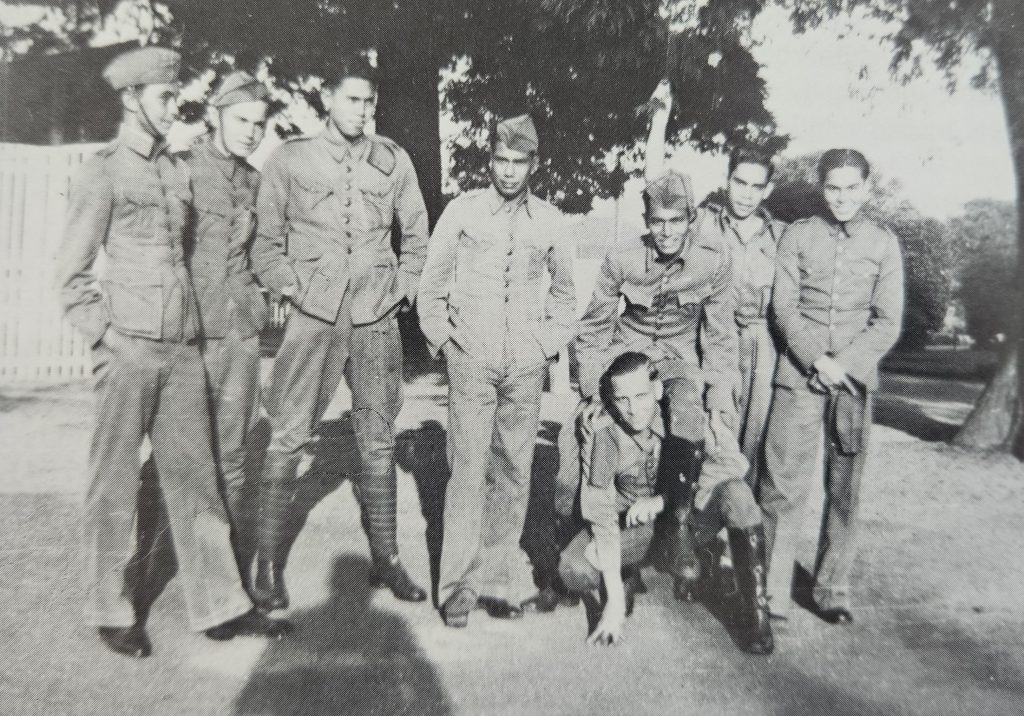
The third group of pupils consisted of those who had no flying experience at all and who were called up at the last minute, for the evacuation of their school (end of January 1942). They evacuated by ship (‘Abbekerk’ and ‘Zaandam’) from the last free port Tjilatjap and debarked at Melbourne. This group also included some apprentice observers and apprentice bombsights. They were housed in the buildings of the Australian Department of Agriculture’s ‘Show Grounds’, pending further destination.
The flight school of Navy Aviation Service, which had been evacuated with its own training aircraft, was stationed at the Australian naval base Rathmines, between Sydney and New Castle.
The continuation of flight training in Australia soon encountered numerous problems. The main ones were:
- lack of aviation gasoline. On May 8, 1942, approximately 30 million British gallons were available in Australia, while the use for war purposes for the next six months was estimated at 53 million gallons. For oils and fats, consumption was estimated at 2.12 million gallons;
- the expansion of the RAAF squadrons to the number of 73 planned by the Australian Air Staff. This created the need for rapid expansion of training facilities, schools, airports, and so on;
- making arrangements for the foreseeable expansion of the U.S. arsenal of weapons in Australia and its air force units;
- the poor flight readiness of the RAAF aircraft, particularly those used for training purposes. As a result, the hiring and training of the flying personnel stagnated. Lack of parts, poor runways and the persistent drought in the summer of 1941-1942 were the causes of a high percentage of engine failures;
- the absence of fighter aircraft ordered from American industry (e.g. the Vultee ‘Vengeance’ dive bombers) forced the Australian Air Force to use aircraft that were actually intended as training aircraft for advanced learners (e.g. the Wirraway);
- the threat of a Japanese attack on Australia.
Apart from the above problems, which adversely affected the continuation of the flying schools, the question arose in their own ranks whether the training should be continued on Australian territory, in British India with the RAF, or in America with the USAAF.
On March 15, 1942, Dr. Van Mook informed the government in London that during a meeting with the Australian government, the chiefs of staff and the American general Brett, he had unanimously obtained their agreement to transfer the Dutch pilots plus their encadrering to the United States. As a result, airfields for war purposes and teaching materials could be freed up for the training of Australian pilots. It was necessary to obtain the agreement in principle of the American Government. Van Mook also suggested that General Van Oyen and his staff be sent to America to take preparatory measures.
On April 20, 1942, the students and staff departed from Melbourne for San Francisco, on board of the ss ‘Mariposa’ of the Matson Navigation Co. (Captain William R. Meyer). On the same day, the envoy to Australia sent the following message to his Dutch counterpart in Washington:
Left for USA:
Navy: 16 flight instructors, 134 student pilots, 7 observer instructors, 4 gunner instructors, 17 apprentice shooters, 2 res. LTZ S (?), health officer, 2 radio instructors, 15 apprentices-telegraphists, 1 radio officer, 1 administration officer, 1 skipper, 7 marines, 1 sergeant writer, 1 military nurse, 45 women, 12 children
Army: 30 flight instructors, 305 student pilots, 2 observers-instructors, 11 student-observer, 6 instructors of language and technology courses, 3 radio instructors, 1 officer radio service, 2 officers administration, 4 non-commissioned officer administration, 1 health officer, 1 dentist, 45 women, 45 children
The first two days the ship was escorted by the Australian cruiser HMS ‘Ajax’ to cross the dangerous waters between Australia, the New Hebrides and Fiji Islands as safely as possible. All indications were that the attack on Australia and a naval battle in those waters was imminent. After that, the ‘Mariposa’ continued alone.
On May 3, 1942, the ‘Mariposa’ arrived in San Francisco. From here it went to Jackson, the capital of Mississippi. Jackson Army Airbase would become the central point of Dutch flight training in America for the rest of the war.
Below are the final statistics from the Flying School for the Airforce of the Royal Netherlands Indies Army and the Royal Netherlands Navy as Jackson, Mississippi, which operated from March 1942 till February 1944. Most of them were send to Australia but others ended up in the UK to fight the war in Europe.
| Type of training | Number of students/pilots that started. | Number of graduates |
| Primary | 320 | 191 |
| Basic | 316 | 277 |
| Advanced Single Engine | 101 | 101 |
| Advanced Twin Engine | 147 | 143 |
| B-25 ops. training | 127 | 120 |
| P-40 ops. training | 60 | 57 |
| PBY seaplane | 20 | 20 |
| Bombardier | 104 | 102 |
| Navigator (seaplanes) | 13 | 13 |
| Navigator (ll. pilots) | 30 | 30 |
| Observer | 29 | 26 |
| Telegrapher/mechanic | 89 | 77 |
| Air gunner | 273 | 269 |
Also trained were: 7 intelligence officers, 6 armaments officers, 8 liaison officers, 2 Bendix gun turret fitters, 8 Sperry s-I bomb aiming equipment fitters, 2 Jack & Heinz flight instrument fitters, 2 Curtiss Wright engine fitters, 3 Allison engine fitters, 2 photo intelligence officers, 4 meteorologists, 5 Bendix and Martin gun turret instructors.
Source, including pictures: De Militaire Luchtvaart van het KNIL in de jaren 1942-1945

